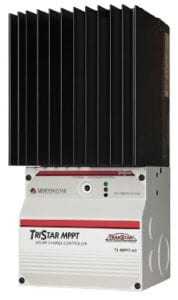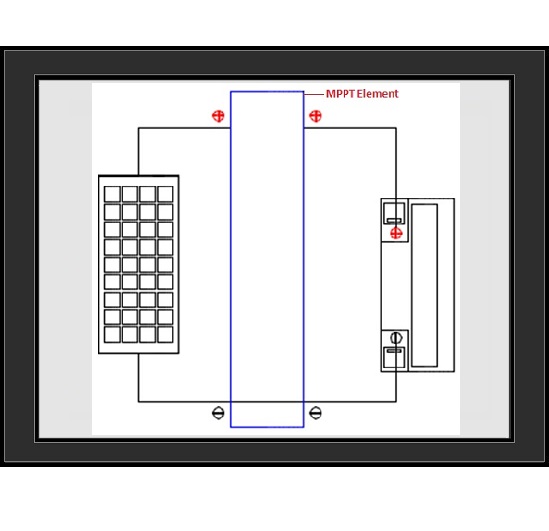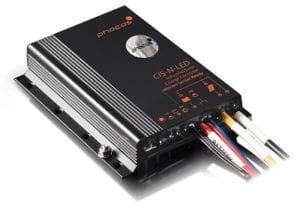Introduction
 It is important to have the solar charge controller correctly sized to properly and safely operate your solar power system. How you size your solar charge controller is dependent on the type of charge controller you have. (Refer to SunWize’s tech note on Solar Charge Controller Types for more information.) Due to popularity, we will focus on sizing MPPT Charge Controllers. Let's get started!
It is important to have the solar charge controller correctly sized to properly and safely operate your solar power system. How you size your solar charge controller is dependent on the type of charge controller you have. (Refer to SunWize’s tech note on Solar Charge Controller Types for more information.) Due to popularity, we will focus on sizing MPPT Charge Controllers. Let's get started!
MPPT Charge Controllers
MPPT charge controllers currently limit their output, so technically you can make the solar array as large as you want and the charge controller will limit the output current to the maximum allowable. There is a practical limit though, if the solar array is too large then the power is just wasted, since the charge controller is always limiting the output. A typical recommendation is to limit the solar array to 110%-125% of the maximum controller rating.
Example: You have a 60A MPPT charge controller and a nominal 24VDC battery. That means we have 1440W of power. We then go ahead and calculate the 110%-125% of the maximum controller rating to get a range of 1584W to 1800W. The complete calculation looks like this: 60A * 24V = 1440W * 1.1 or 1.25 = 1584W-1800W
All Other Charge Controllers
Example: You have an array with an Isc of 8A. Using the 125% safety factor, the charge controller should be rated for a minimum of 8A * 1.25 * 1.25 = 12.5A.
Overcurrent protection should be sized the same way, and the next nearest size device used. In this example, a 15A circuit breaker would be used. Note: this should be paired with the maximum series string fuse rating of the solar module and a combiner box or additional overcurrent devices may be needed, refer to SunWize’s tech note on Combiner Box Requirements.
Some solid-state charge controllers may have inherent design margins or overload protections that allow you to use lower safety margins in your sizing. If strict NEC adherence is not required, consult with the charge controller manufacture for their sizing recommendation. Typically, it’s the array Isc * 110%-125%. For safety purposes the overcurrent protection should still be sized per the NEC.



